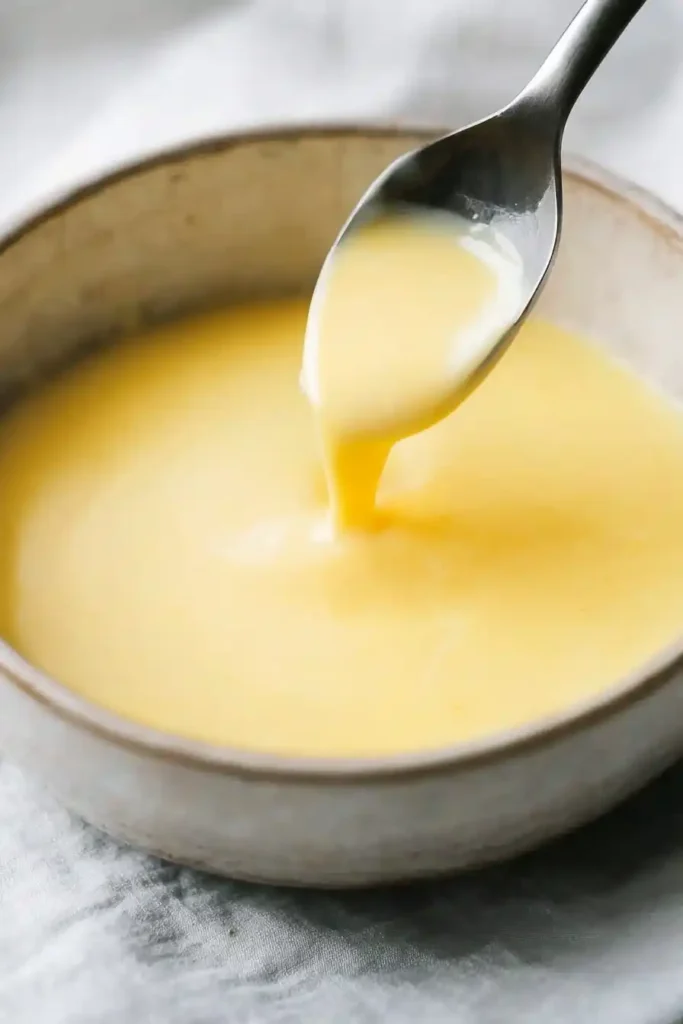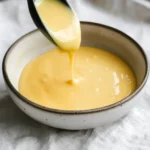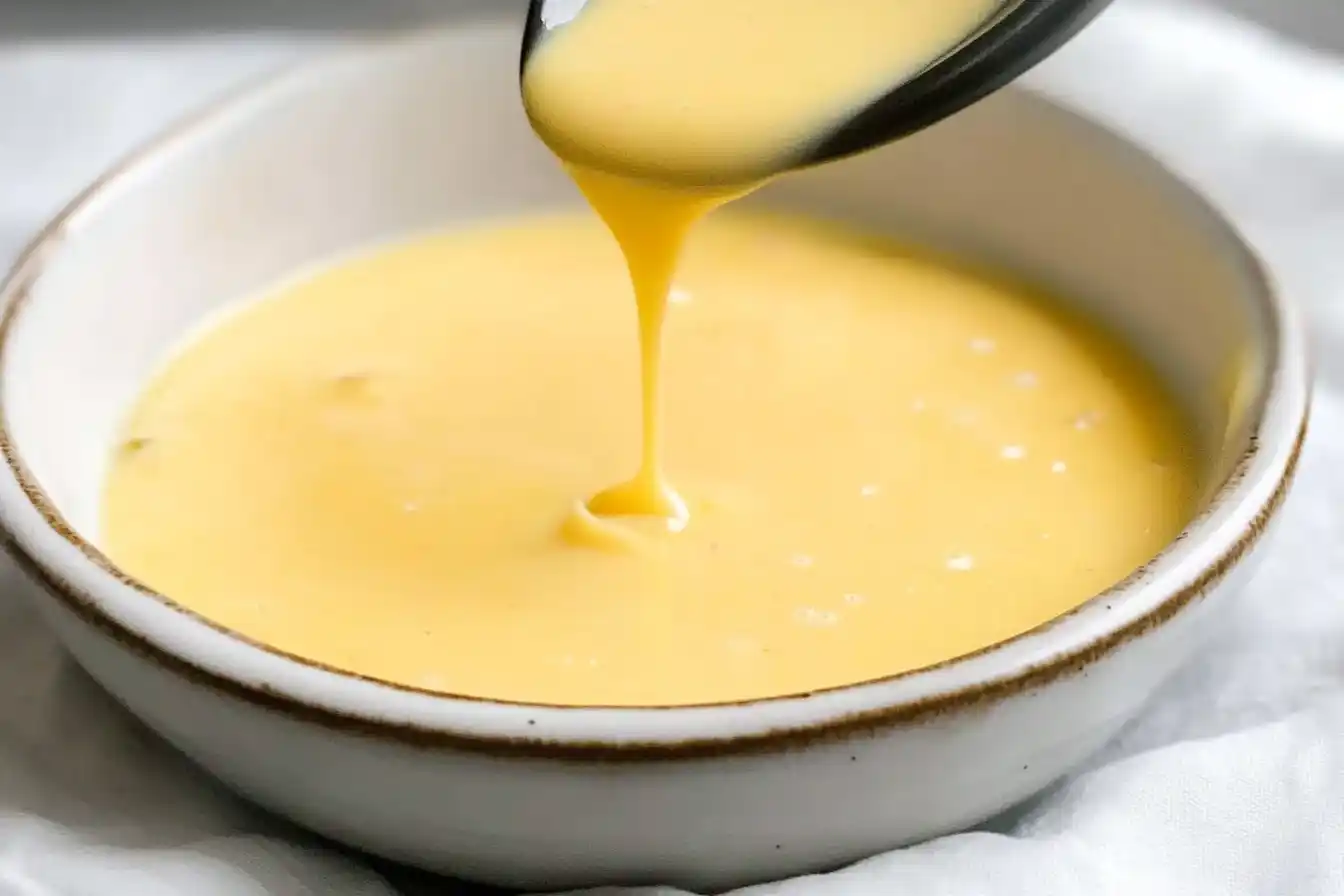Hollandaise sauce, a luxurious and velvety emulsion, is a cornerstone of classic French cuisine. Known for its rich, buttery flavor and smooth texture, this sauce elevates dishes like Eggs Benedict, asparagus, and grilled fish. In this comprehensive guide, we’ll explore the history of hollandaise sauce, share a foolproof recipe, and provide expert tips to perfect this culinary gem.
What Is Hollandaise Sauce?
Hollandaise is one of the five “mother sauces” in French cooking, as defined by chef Auguste Escoffier. It’s an emulsion of egg yolks, melted butter, and lemon juice or vinegar, seasoned with a pinch of salt and sometimes a dash of cayenne pepper. The sauce is renowned for its creamy consistency and tangy, buttery taste, making it a versatile accompaniment for breakfast, brunch, and dinner dishes.
Key Ingredients
- Egg yolks: Provide richness and act as the emulsifier.
- Butter: Adds the signature silky texture and flavor.
- Lemon juice or vinegar: Contributes acidity to balance the richness.
- Salt and seasonings: Enhance the overall flavor profile.
The History of Hollandaise Sauce
Despite its French culinary status, hollandaise sauce likely originated in the Netherlands, hence the name “hollandaise,” meaning “Dutch” in French. Historical records suggest that similar butter-based sauces were popular in Dutch cuisine as early as the 16th century. The sauce was later refined in France, where it became a staple in haute cuisine.
One of the earliest documented recipes for hollandaise appeared in a 1651 Dutch cookbook, though it gained prominence in the 19th century through French chefs like Antonin Carême. Today, hollandaise is synonymous with dishes like Eggs Benedict, a brunch favorite invented in New York City in the late 19th century.

How to Make Hollandaise Sauce: A Step-by-Step Recipe
Creating hollandaise sauce at home may seem intimidating, but with the right technique, it’s achievable for cooks of all levels. Below is a classic recipe that serves 4–6 people.
Ingredients
- 3 large egg yolks
- 1 tablespoon lemon juice (freshly squeezed)
- 1/2 cup (1 stick) unsalted butter, melted
- Pinch of salt
- Pinch of cayenne pepper (optional)
- 1–2 tablespoons warm water (if needed to adjust consistency)
Equipment
- Double boiler (or a heatproof bowl over a saucepan)
- Whisk
- Small saucepan for melting butter
Instructions
- Set Up a Double Boiler: Fill a saucepan with 1–2 inches of water and bring to a simmer. Place a heatproof bowl over the saucepan, ensuring the bottom doesn’t touch the water.
- Whisk Egg Yolks and Lemon Juice: In the bowl, combine egg yolks and lemon juice. Whisk vigorously until the mixture thickens slightly, about 1–2 minutes.
- Add Butter Gradually: Slowly drizzle in the melted butter while whisking constantly. The sauce should begin to emulsify and thicken. If it becomes too thick, add a tablespoon of warm water to loosen it.
- Season and Adjust: Remove the bowl from heat. Add a pinch of salt and cayenne pepper (if using). Taste and adjust with more lemon juice or salt if needed.
- Serve Immediately: Hollandaise is best served fresh and warm. If you need to hold it, keep it in a warm (not hot) place and whisk occasionally to prevent separation.
Yield and Storage
- Yield: Approximately 3/4 cup of sauce.
- Storage: Hollandaise doesn’t store well due to its delicate emulsion. If necessary, refrigerate for up to 1 day and gently reheat in a double boiler, but it may separate.
Expert Tips for Perfect Hollandaise Sauce
With over a decade of culinary writing experience, I’ve gathered tried-and-true tips to ensure your hollandaise is flawless every time:
- Control the Heat: Keep the heat low to avoid scrambling the eggs. A gentle simmer in the double boiler is ideal.
- Use Fresh Ingredients: Freshly squeezed lemon juice and high-quality butter make a noticeable difference in flavor.
- Whisk Constantly: Continuous whisking prevents curdling and ensures a smooth emulsion.
- Fix a Broken Sauce: If the sauce separates, whisk in a teaspoon of warm water or a fresh egg yolk over low heat to re-emulsify.
- Experiment with Variations: Add Dijon mustard, fresh herbs like tarragon, or orange zest for a unique twist.
Common Uses for Hollandaise Sauce
Hollandaise is incredibly versatile and pairs beautifully with a variety of dishes:
- Eggs Benedict: The classic brunch dish with poached eggs, English muffins, Canadian bacon, and hollandaise.
- Vegetables: Drizzle over steamed asparagus, broccoli, or roasted Brussels sprouts.
- Seafood: Enhance grilled salmon, lobster, or crab with a dollop of hollandaise.
- Potatoes: Use as a decadent topping for roasted or mashed potatoes.

Troubleshooting Hollandaise Sauce
Even seasoned cooks encounter issues with hollandaise. Here’s how to address common problems:
- Too Thick: Thin with a tablespoon of warm water or lemon juice.
- Too Thin: Whisk in a bit more melted butter or an extra egg yolk over low heat.
- Curdled or Broken: Blend the sauce in a blender with a teaspoon of hot water, or start fresh with a new egg yolk and slowly incorporate the broken sauce.
Hollandaise vs. Béarnaise: What’s the Difference?
Hollandaise is often confused with béarnaise sauce, another French mother sauce. While both are egg yolk and butter emulsions, béarnaise uses white wine vinegar and is flavored with shallots, tarragon, and peppercorns, giving it a more herbaceous and tangy profile. Hollandaise, by contrast, is simpler and relies on lemon juice for its acidity.
Nutritional Information (Per 2-Tablespoon Serving)
- Calories: ~140 kcal
- Fat: 15g (9g saturated)
- Protein: 1g
- Carbohydrates: 0.5g
- Cholesterol: 100mg
Note: Hollandaise is rich and should be enjoyed in moderation, especially for those watching their fat or cholesterol intake.
Conclusion
Hollandaise sauce is a timeless culinary treasure that adds elegance and flavor to countless dishes. With its creamy texture and bright, buttery taste, it’s no wonder this sauce remains a favorite among chefs and home cooks alike. By following our recipe and expert tips, you’ll master hollandaise in no time and impress your guests with restaurant-quality results.
Whether you’re drizzling it over Eggs Benedict or experimenting with creative variations, hollandaise is sure to elevate your culinary creations. So, grab your whisk and get started—your perfect hollandaise awaits!

Hollandaise Sauce
Ingredients
- 3 large egg yolks
- 1 tbsp lemon juice, freshly squeezed
- 1/2 cup unsalted butter, melted
- 1/4 tsp salt
- Pinch of cayenne pepper
- 1 –2 tbsp warm water optional, for thinning
Instructions
- Set up a double boiler with simmering water.
- Whisk egg yolks and lemon juice in a heatproof bowl until thickened.
- Place bowl over double boiler; slowly drizzle in melted butter, whisking constantly.
- Cook hollandaise sauce until smooth and thickened, about 2–3 minutes.
- Remove from heat; add salt and cayenne pepper.
- Adjust consistency with warm water if needed.
- Serve immediately over eggs or vegetables.

